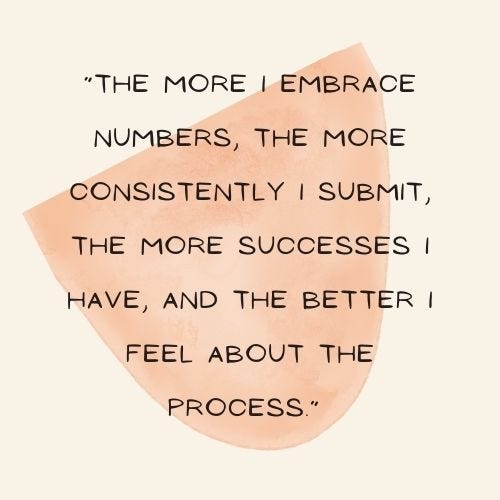Photo by Green Chameleon on Unsplash
It has been many years (too many, don’t ask!) since I first started publishing in literary journals. I remember the utter thrill of receiving my first “yes” from FIELD—a journal filled with voices that continue to influence me to this day. “I’m part of this!” I thought. And I was. And then I continued to be. For that, I am unfathomably grateful to the editors who publish my poems from time to time.
And yet, I have often avoided submitting. The process can feel uncomfortable at best, humiliating and enraging at worst. Maybe you can relate? If I want to feel hope, envy, bafflement, and shame all within a few minutes, I just need to open my submissions spreadsheet. No matter how many years I’ve been in this game, I’m still prone to paralyzing bouts of imposter syndrome when I get “nos.”
Frustration might be every poet’s fate. This, from poet Bill Knott in an exchange with The Best American Poetry editors, expresses what most of us have felt at one time or another.
Why do I have to suffer this cycle over
and over, why can't I quit. Why can't
I just write my crummy poems and post
them on my blog; why do I have to
present them for judgement?I'm sorry, but I can't stand it anymore.
I can't do it. . . sending the poems
out, getting them published or rejected,
I don't care anymore.
Oooof! Maybe I’ll be saying something similar at age 67, the age Bill was when he wrote this. I hope not. And I hope you never hit a low like this, either. So I’d like to share a personal strategy that has kept me from spiraling into dejection and burnout—one that has also increased my acceptance rate.
Stop fiddling with words, start doing the numbers
A couple of years ago, I realized that I had my submission priorities backwards: I was overthinking quality and under-prioritizing quantity. Quality matters, yes, but only to a point. Publishing is mostly a numbers game, so I developed a new strategy.
First, I adopted writer Kim Liao’s approach in “Why You Should Aim for 100 Rejections a Year.” I saw how much of my angst was due to overthinking and, without that, how I could create a larger field of possibility. Next, I developed a system that I call The Power of Threes. Here’s how it works:
I create packets of 3 poems each (because most journals want between 2-5, and there’s no reason to send more than 3 poems unless absolutely required)
These packets go to 3 journals at a time (unless they do not take simultaneous submissions; these days I only submit to those that do)
I don’t rethink anything (not a single thing!) about these packets until they have received at least 3 rejections; then I might look at poem order (is the right poem on top?) or poem titles; rarely do I change the poems themselves, though every once in a while I pull one back that I may have sent out prematurely (it happens)
After implementing this last year, I doubled my acceptance rate. More importantly, it has taken a lot of the angst and unnecessary pain out of the process. The more I embrace numbers, the more consistently I submit, the more successes I have, and the better I feel about the process. Win, win, win.
But … do we have to submit?
I do know a few successful writers who have stopped submitting altogether. They are the rarest of rare exceptions. On a practical level, I persist because I’m unlikely to publish another book if I’m not also publishing individual poems in journals. Book publishers quickly weed out authors who aren’t actively publishing.
Publishing demonstrates: 1. You’re committed to developing an audience, to dialoging with the world in some way; you’re not just madly penning poems to get back at your ex. 2. Your voice stood out in the cacophony; your poems must express something vital if they’ve made it beyond massive submission queues and into the files of editors who are excited to publish them.
(That said, I think there’s still an awful lot of work that journals need to do to diversify the voices in their pages. Reality: There’s still a lot of gatekeeping. Have I mentioned that I prioritize journals with women in prominent editorial positions?)
Whatever you do, keep submitting
Just keep submitting. Especially keep submitting to the journals that send nice not-this-time-but-please-send-us-more notes. And if you happen to be submitting while female, like me, heed these wise words by poet and editor Kelli Russell Agodon, co-founder of Two Sylvias Press.
I’d love to hear what works for you. What’s your submissions strategy?






I have a rule for myself to always have *something* in the hopper of outgoing submissions. I find it takes some of the sting out of an individual rejection if I have many more irons in the fire.
I also find that it's helpful to volunteer as a reader for a journal, because then you can see how the decisions aren't (usually) personal... they're about timing, fit, number of poems already accepted (maybe in the same theme even), etc etc. Once you see for yourself how the decisions are made, it's slightly easier not to feel personally rejected when the poems aren't placed.
Interesting. I also appreciate Erica Minton Reid's comments about being a reader—I've always wondered about the timing of submissions.